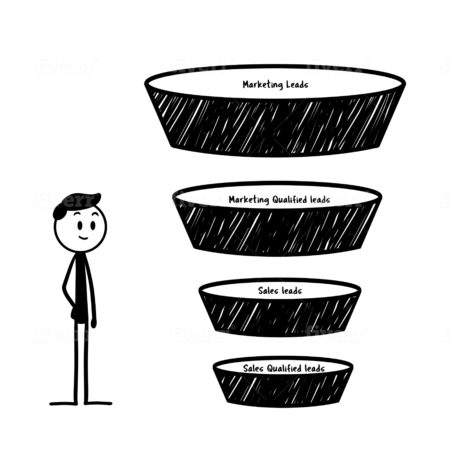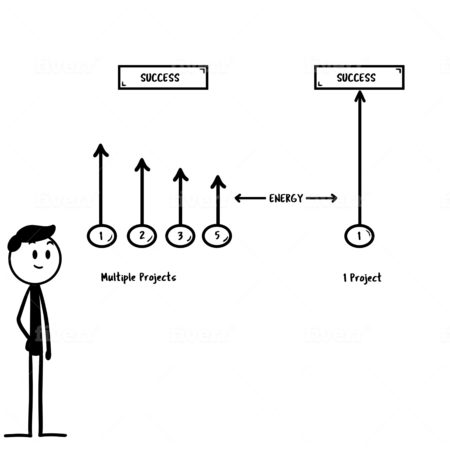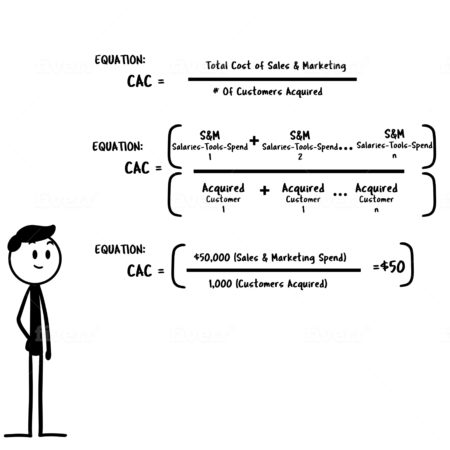9 Key Marketing Metrics and How to Measure Them

The article below is just a small glimpse into our new book. If you want to learn a lot more about Marketing Metrics, click here to check out the book now.
There are countless marketing metrics you and your marketing team could consider when it comes to planning and measuring marketing. Of course some are more important, relevant, and useful than others. Some depend on industry, or segment of industry, others depend on audience, others on channel, or current technology or trends. Yet some marketing metrics prove themselves to be most valuable, time and time again. Based on our extensive experience, those marketing metrics are the nine below. So take a look and see if you can apply them to your own business. We hope they are helpful!
For even more insight, we recommend using the dashboard tool from scaleurs.com, which can help you define and tailor your business’s KPI’s. (They also have a “life dashboard” which we really like. Read more about it here.)
And finally, take your metrics all the way with our FunnelIQ tool. It might be just what you need!
1. Lead Volume: Lead to Customer Conversion Rate
Obviously, it’s important to measure how many leads your marketing efforts are generating. But if you stop there, you’re missing a crucial piece of the puzzle: how many leads actually turn into customers. Knowing this figure can tell you whether your sales team needs a higher volume of leads, higher-quality leads, or additional supporting content to help close deals.
How to measure it: The benchmark for conversion rates will vary by industry, but a few minutes of Googling should give you a solid understanding of the number you should be aiming to outperform. It’s also important to consider conversion rates at each stage of the funnel: The middle and bottom of your funnel rates should be higher than your top-of-funnel numbers.
The funnel you can create by using Google Data Studio can be one way to visualize each stage of the funnel, from first touch to lead conversion to opportunity creation, and gain a deeper understanding of the customer journey. Compare that number with the result you found with Google to see if you are on the right track.

2. Point of Conversion: Multi-Touch Attribution
Very few people research and buy during the same web browsing session. Most people will start their search for a product or stumble across a piece of content, click through to your website, and poke around your blog, but not necessarily buy your service or product. Days or even weeks later, they will search for your company name, click on a paid ad, and purchase. By only crediting the point of conversion, you’re not getting a full picture of the customer journey, and you’re undervaluing key aspects of your marketing efforts.
How to measure it: You can use many types of attribution models, depending on what you want to learn and how your marketing organization works. Google Data Studio’s Funnel can be one way to give credit to each stage of the funnel, from first touch to lead conversion to opportunity creation, and gain a deeper understanding of the customer journey. In this attribution model, 30% of the credit goes to the first click, 30% of the credit goes to the click that created the lead conversion, and 30% goes to the click that created the opportunity. 10% of the credit goes to all other touches.
For both Unibake and CHD, I set up a dashboard to use to set and reach monthly objectives. I look at the dashboard to see if there have been any big changes in the past month and where we should adapt accordingly. Together with W2M, we draft a plan for the next month and adjust along the way.
3. Blog Visitors: Engaged Time Spent
It’s not enough to measure time spent on a page, because you don’t know if it’s active time or your content is just sitting open in an idle tab. Tracking engaged time lets you know how long users are actively paying attention to your content, and therefore how valuable that content is to your target audience. Are they even seeing your CTA? What can you leave out that people aren’t paying attention to, and what do you need to rework?
How to measure it: Content analytics software like Chartbeat or even WordPress plugins like Riveted can track user activity, including scrolling, clicking, using the keyboard, and page visibility, to determine whether the reader is actively engaging with your content or in an idle state.
If you have a blog, it is important to understand what people do and don’t like about it. Which articles do they spend the most time on? You must deliver content that brings the most value to your customers.
4. Number and Quality of Inbound Links
High-quality websites are judged by search engines as trustworthy and reputable resources. Low-quality websites can even penalize your website rankings, which is why it’s much more important to have a few high-quality links rather than dozens of low-quality ones. Instead of tracking the number of inbound links you’re getting, focus instead on these questions: How have certain inbound links helped you rank for certain keywords? Is your organic traffic increasing?
How to measure it: To determine quality links, check whether the site is relevant to your site, authoritative/trustworthy, attracting a human audience or solely designed for web crawlers, or inking to other spammy sites (online gambling, payday loans, etc.).
The Zapier tool lets you collect all of your leads in an Excel file after each campaign. It shows you the leads based on the company name, job titles, or other form fields (depending on your input) if leads are qualified based on your criteria. Sales development reps (SDRs) can then call on these leads daily because they are “warmer” leads.
5. Social Media Reach/Engagement
While it’s good to have a large number of followers of your social media platforms, it doesn’t help your business if they aren’t actually engaging with you. How many people are actually clicking on, responding to, and interacting with your posts? And who are they? Answering these questions will help ensure you’re delivering the right content to the right people in the right places.
How to measure it: Engagement types vary depending on the social media platform. Keep an eye on Facebook’s engagement score and number of clicks, likes, shares, and comments; Twitter retweets, replies, or favorites; Pinterest likes, comments, or re-pins; Google+ likes, comments, or shares, etc.
In general, I don’t waste a lot of time on organic postings. I post once or twice daily to keep current customers engaged. What matters is the engagement by consumers on paid media. How is one campaign performing vs. the budget? How many people completed an online form or request for information? These are much better indicators of a good lead.
For example, your business might receive a lead through a form at your website. By tracking its history, you could see that this person had previously engaged with a paid post two times but hadn’t submitted the actual form. Two weeks later, the person visited the website again and filled in a form, so one of your sales team could contacted them and close the deal.
6. Email Unsubscribes/Unengaged Subscribers
Some people who subscribe to your list won’t stay engaged with your emails, which is why so many marketers keep an eye on how many recipients unsubscribe. But not everyone will go through the process of unsubscribing, especially when it takes fewer clicks to just trash emails that aren’t of interest. For the health of your subscriber list, it’s important to track unengaged subscribers.
How to measure it: Decide on your marketing department’s definition of unengaged. Is it someone who hasn’t clicked on an email in three months? A year? Then, consider implementing an automatic unsubscribe that will remove these recipients from your list, and send an email notifying them that they’ve been unsubscribed. Keep in mind that some email services route “graymail” messages with low engagement to the junk folder.
At CHD, we had a lot of contacts in our system. During our first email campaign, we noticed that around 50 people unsubscribed immediately. The good thing about using a tool like Hubspot is that you can see who unsubscribed. Sometimes it’s better that less-relevant leads get removed so you can spend time and effort on resources elsewhere.
7. Website Traffic: Conversion Rate
A lot of your marketing efforts go into driving traffic to your website, so of course, you want to keep an eye on how many people you’re successfully attracting to your site and where they’re coming from — but if you only focus on visits without putting equal emphasis on conversion, you’re wasting your time and money. Plus, putting a little effort into bumping up conversion rates can have a big impact on your business: Imagine the difference that even a 1 or 2% boost in new customers could do for your bottom line.
How to measure it: First, define what qualifies as a conversion. Is it a purchase? Booking a consultation or requesting additional information? Signing up for a free trial? Once you’ve figured out exactly what you want to measure, set up a landing page that visitors will only see after they’ve converted. Just make sure traffic can’t be sent to that page in any other way, or else you’ll get skewed figures.
Before starting, make sure your tracking pixels are installed. Google Tag Manager (GTM), Google Analytics (GA), Google Console, and Social Media Pixels are critical for measuring web traffic for website conversion rates. If you get a lead, you want to know where it came from.
8. Number of MQLs: MQL to SQL Ratio
Marketing Qualified Leads (MQLs) are generally defined as bottom-of-the-funnel prospects who have indicated they’re ready to purchase, or at least talk to a salesperson, by downloading buying guides, requesting a demo, or signing up for a free trial. Sales Qualified Leads (SQLs) are those potential customers whom sales determines are ready for a direct follow-up. Looking at the percentage of MQLs that are accepted as SQLs is a good indicator of the health of your pipeline and your marketing team’s ability to qualify and screen leads. It’s also a great indication of how well your marketing and sales team are aligned and communicating with each other, since a low ratio raises a red flag that there’s a disconnect between marketing and sales.
How to measure it: Divide the number of SQLs by the number of MQLs to calculate your MQL to SQL conversion rate. What’s a good benchmark? After analyzing hundreds of companies, Implicit found that the average conversion rate was 13%, and took an average of 84 days to convert. But keep in mind: That number varies greatly, depending on the source of the lead. For example, website leads converted at an average of 31.3%, referrals at 24.7%, and webinars at 17.8%, while email campaigns convert at just 0.9%, lead lists at 2.5%, and events at 4.2%.
Check monthly to track the cost of acquisition and see if you have the right leads in-house.
9. External/Internal Metrics
Obviously, it’s important to keep an eye on external metrics like lead quantity, quality, and conversion. But if (when) any of these numbers start to slip, how will you know what you need to fix if you don’t pay attention to how the work gets done in the first place? When it comes to getting the most out of your internal resources, don’t just trust your gut. Keep your marketing team running effectively by tracking the number of hours wasted in status meetings, repeatable work that could be automated, dealing with unnecessary interruptions, and the efficiency of your review and approvals process.
How to measure it: Hold frequent check-ins with your team to identify roadblocks and gather feedback about how processes can be improved.
I hope these metrics have been informative and helpful. Now get out there and start measuring and testing. Good luck!
Become a Successful Scaleur
Scaling is a strategy that can only be mastered by a scaleur who is a dedicated learner and considers real-time business priorities. I hope the article above has helped! Marketing Scaleurs is a scaling company that helps entrepreneurs scale their marketing efforts. We’re experts in growth marketing, product development, and more, creating custom growth plans for startups, entrepreneurs and scaleurs in order to help them gain traffic, generate leads and increase their revenue.
If you want traffic, leads and sales, get in touch and you’ll start getting results in no time!







